Table of contents
- Model Overview
- Basic Introduction of Model
- DeepSeek v3
- Llama 3.3 70b
- Model Comparison
- Speed and Cost Comparison
- Speed Comparison
- Cost Comparison
- Benchmark Comparison
- Hardware Requirements
- Applications and Use Cases
- Accessibility and Deployment through Novita AI
- Step 1: Log In and Access the Model Library
- Step 2: Choose Your Model
- Step 3: Start Your Free Trial
- Step 4: Get Your API Key
- Step 5: Install the API
- Conclusion
- Frequently Asked Questions
Model Overview
DeepSeek V3 is a Mixture-of-Experts (MoE) model designed for high performance in tasks like coding and mathematics.
Llama 3.3 70B is an optimized transformer model that excels in multilingual tasks and instruction following.
Model Differences
DeepSeek V3 utilizes a MoE architecture with Multi-head Latent Attention (MLA), activating only part of its parameters for each token.
Llama 3.3 employs an auto-regressive transformer architecture with Grouped-Query Attention (GQA).
Performance
DeepSeek V3 shows superior capabilities in mathematical reasoning and code generation.
Llama 3.3 demonstrates strong performance in general language understanding and multilingual support.
Hardware Requirements
DeepSeek V3 requires more VRAM and storage but supports a wider variety of GPUs.
Llama 3.3 can run on mid-tier hardware with lower overall requirements.
Use Cases
DeepSeek V3 is ideal for complex reasoning, coding tasks, and synthetic data generation.
Llama 3.3 is suited for multilingual applications, AI assistants, and content creation.
If you’re looking to evaluate the DeepSeek V3 and Llama 3.3 70B on your own use-cases — Upon registration, Novita AI provides a $0.5 credit to get you started!
The field of large language models (LLMs) is rapidly evolving, with new models continually pushing the boundaries of what’s possible. This article provides a practical comparison of two prominent models: DeepSeek V3 and Llama 3.3 70B, focusing on their technical specifications, performance characteristics, and suitable use cases. This comparison will help developers and researchers understand the strengths and limitations of each model to make informed decisions for specific applications.
Basic Introduction of Model
To begin our comparison, we first understand the fundamental characteristics of each model.
DeepSeek v3
Release Date: December 26, 2024
Model Scale:
Key Features:
Model Architecture: Mixture-of-Experts (MoE) model
Technical Features: 128K context window length
Performance Metrics: Excellence in code-related and math tasks
Training Scale: Trained on 14.8 trillion tokens
Language Support: no specific information
Llama 3.3 70b
Release Date: December 6, 2024
Model Scale:
Key Features:
Model Architecture: Grouped-Query Attention (GQA)
Technical Features: 128K context window length
Performance Metrics: Excellence in multilingual tasks
Training Scale: Trained on 15 trillion tokens
Language Support: English,French,German,Italian,Portuguese,Spanish,Hindi,Thai
Model Comparison
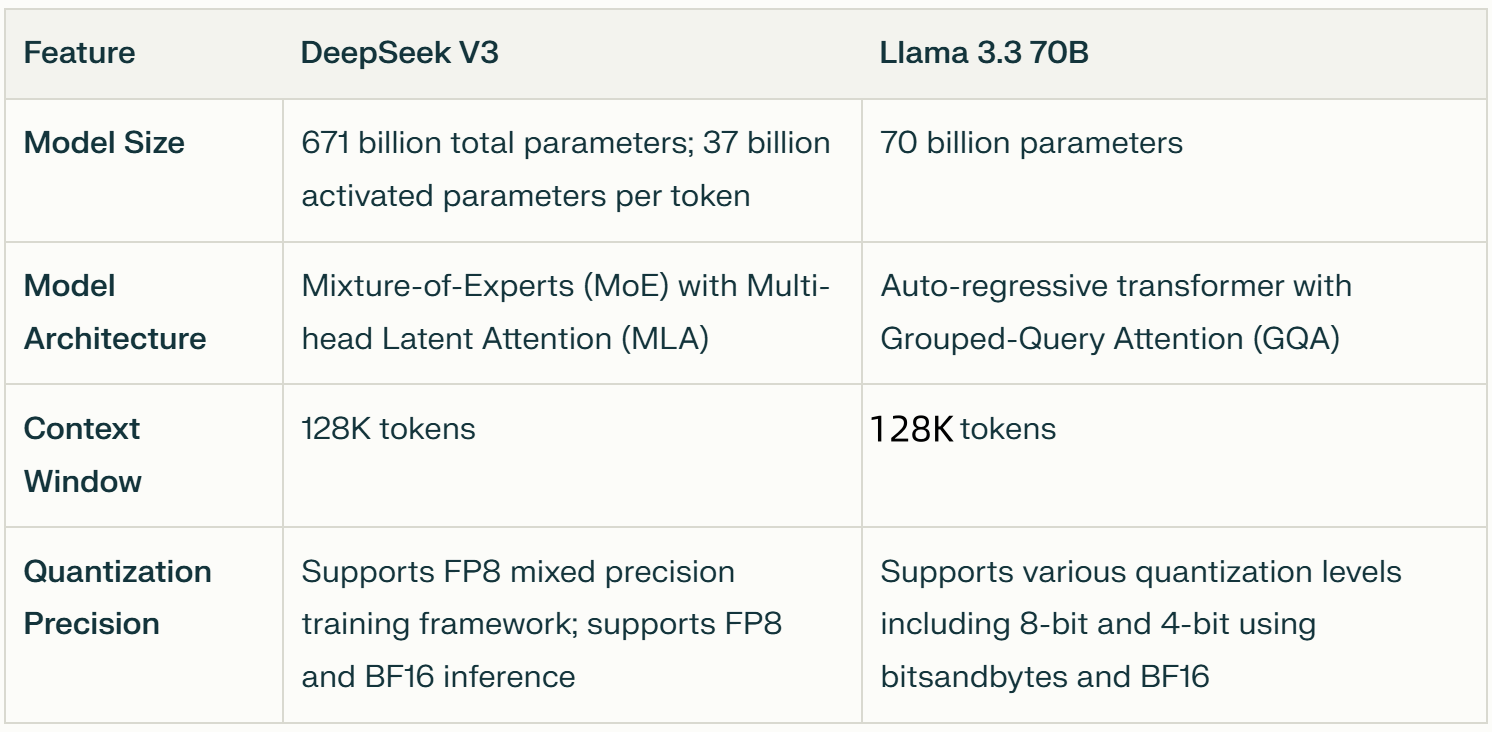
Speed and Cost Comparison
Speed Comparison
If you want to test it yourself, you can start a free trial on the Novita AI website.
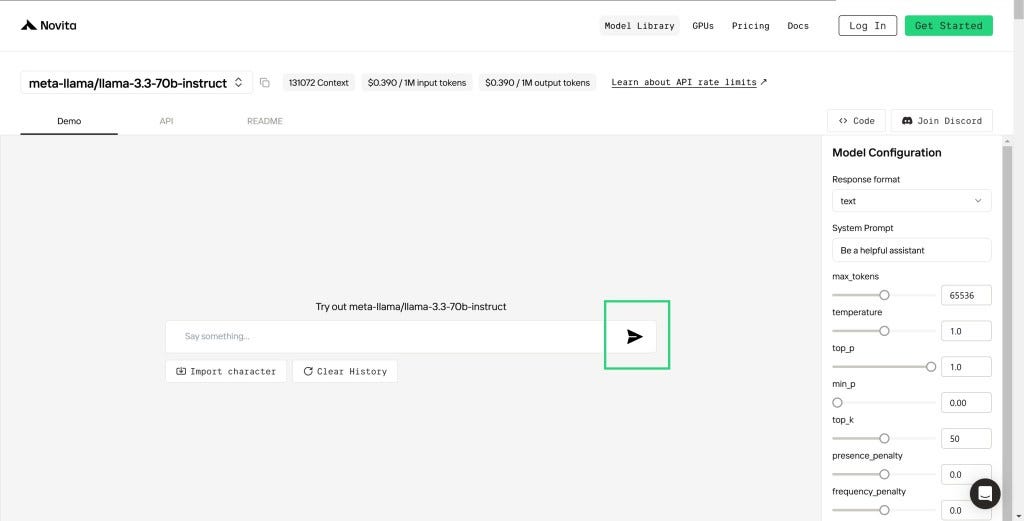
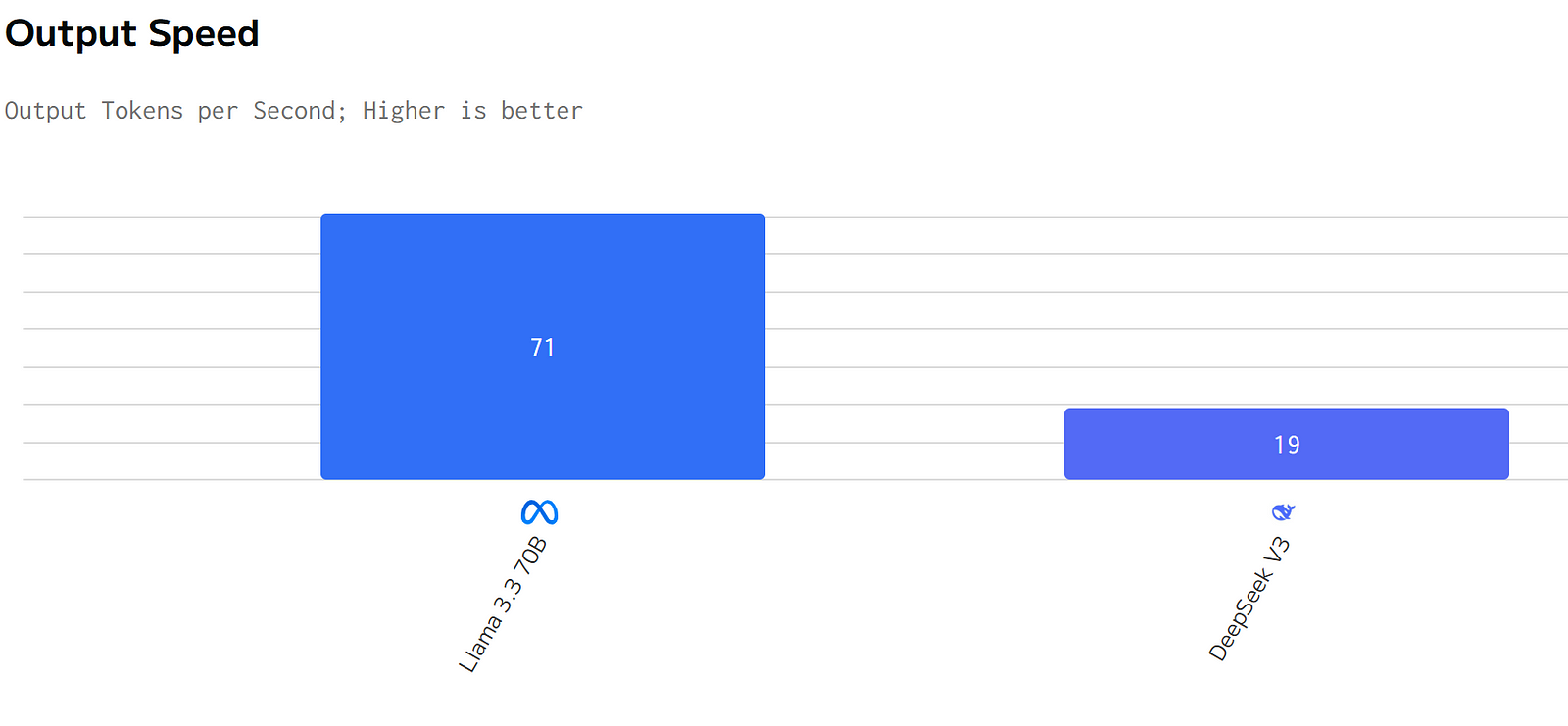
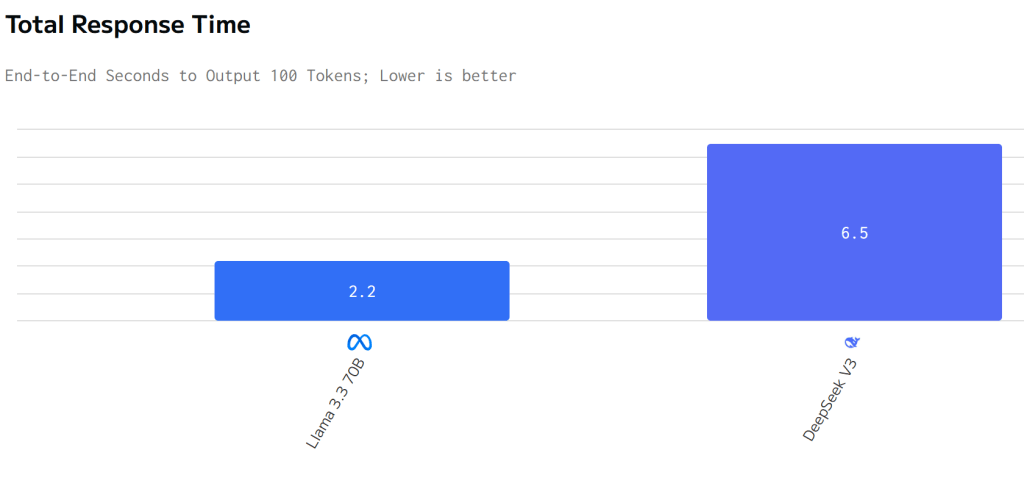
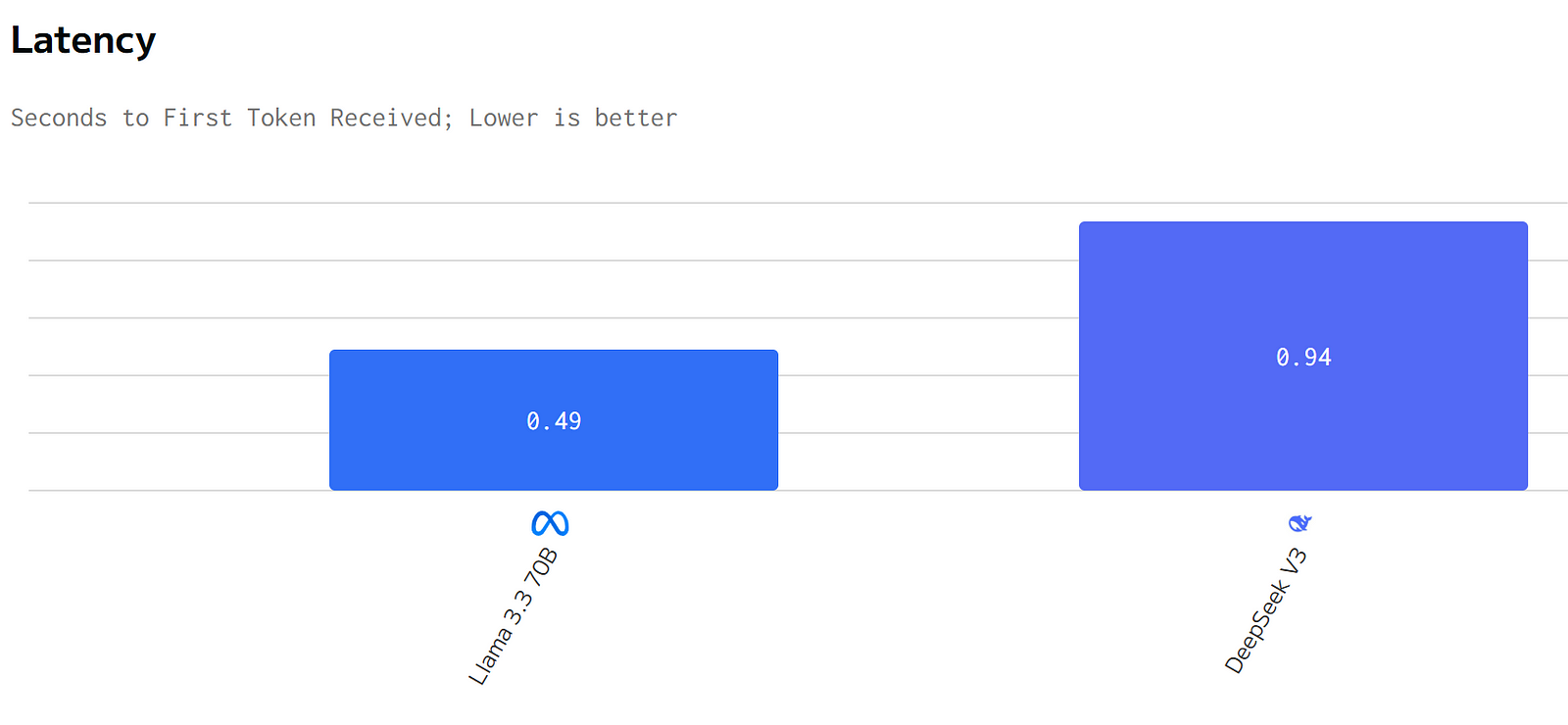
Cost Comparison
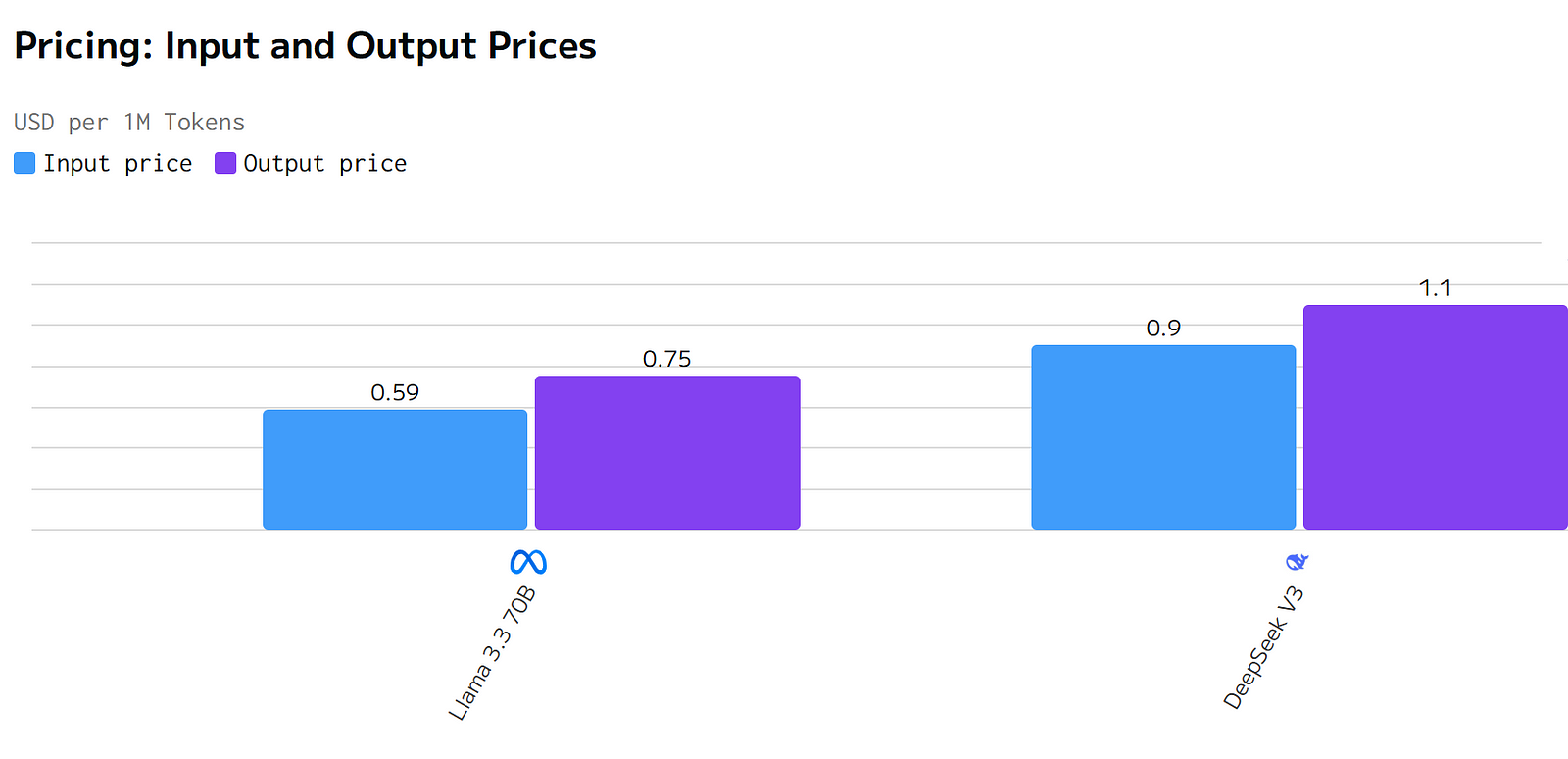
Llama 3.3 70B outperforms DeepSeek V3 in terms of pricing, total response time, latency, and output speed. Therefore, if you need to choose a model that offers better cost-effectiveness and performance, Llama 3.3 70B would be the better choice.
Benchmark Comparison
Now that we’ve established the basic characteristics of each model, let’s delve into their performance across various benchmarks. This comparison will help illustrate their strengths in different areas.

For tasks requiring strong general language understanding and mathematical capabilities, Llama 3.3 70B is the better choice.
For tasks involving code generation and evaluation, as well as more advanced mathematical problem-solving, DeepSeek V3 is more suitable.
If you would like to know more about the llama3.3 benchmark knowledge. You can view this article as follows:
Hardware Requirements

In summary, DeepSeek V3 has significantly higher VRAM and storage requirements compared to Llama 3.3 70B. However, it supports a wider variety of GPUs and is optimized for efficient training. On the other hand, Llama 3.3 70B has relatively lower hardware requirements, making it suitable for running on mid-tier hardware.
Applications and Use Cases
DeepSeek V3:
Complex reasoning tasks
Advanced coding and software development
Mathematical problem solving
Synthetic data generation
Llama 3.3 70B:
Multilingual chatbots and AI assistants
Applications requiring strong instruction following
Code generation and software development
Global applications with multilingual communication
Content creation and summarization
Accessibility and Deployment through Novita AI
Step 1: Log In and Access the Model Library
Log in to your account and click on the Model Library button.
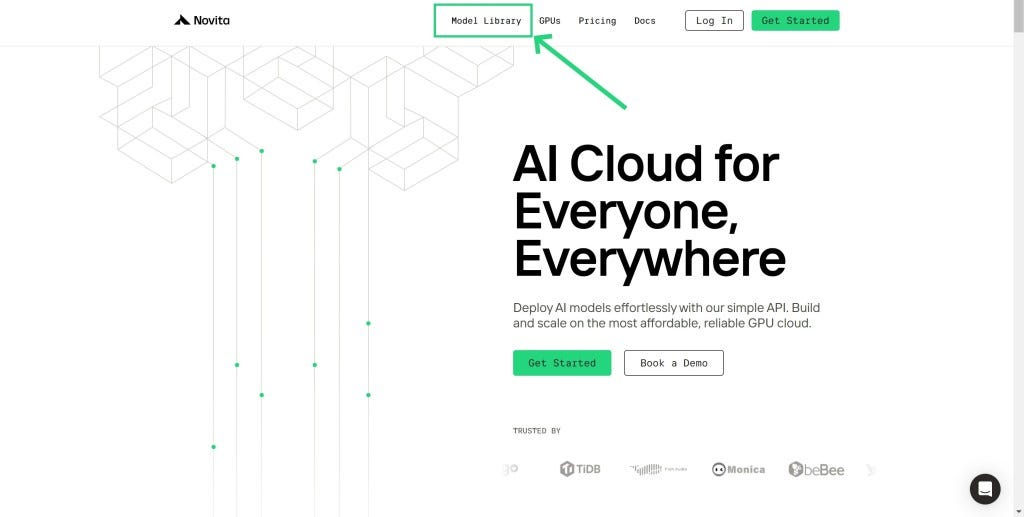
Step 2: Choose Your Model
Browse through the available options and select the model that suits your needs.
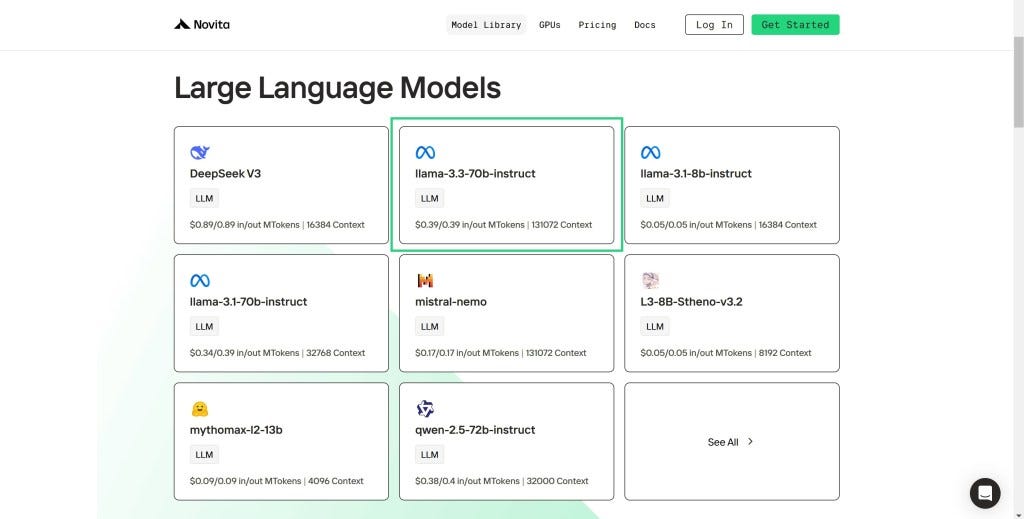
Step 3: Start Your Free Trial
Begin your free trial to explore the capabilities of the selected model.
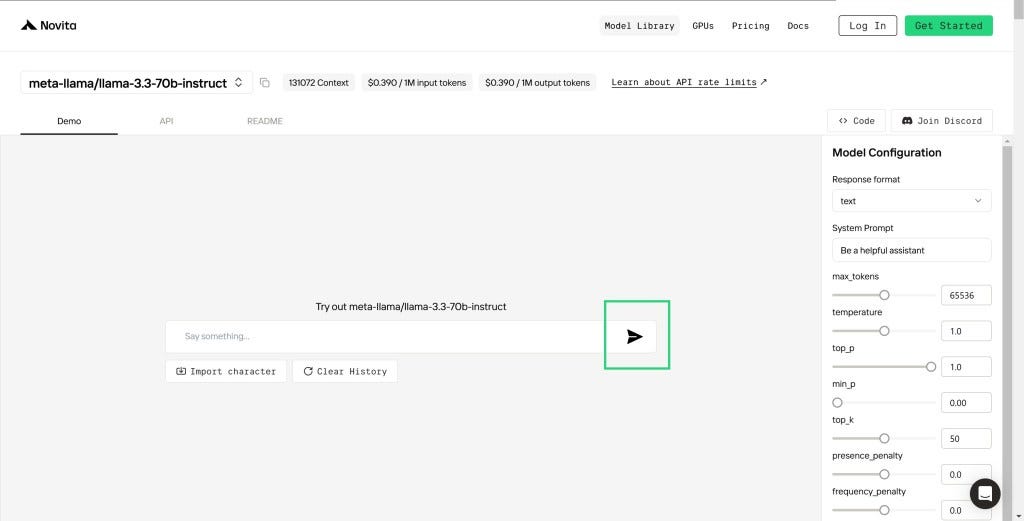
Step 4: Get Your API Key
To authenticate with the API, we will provide you with a new API key. Entering the “Settings“ page, you can copy the API key as indicated in the image.
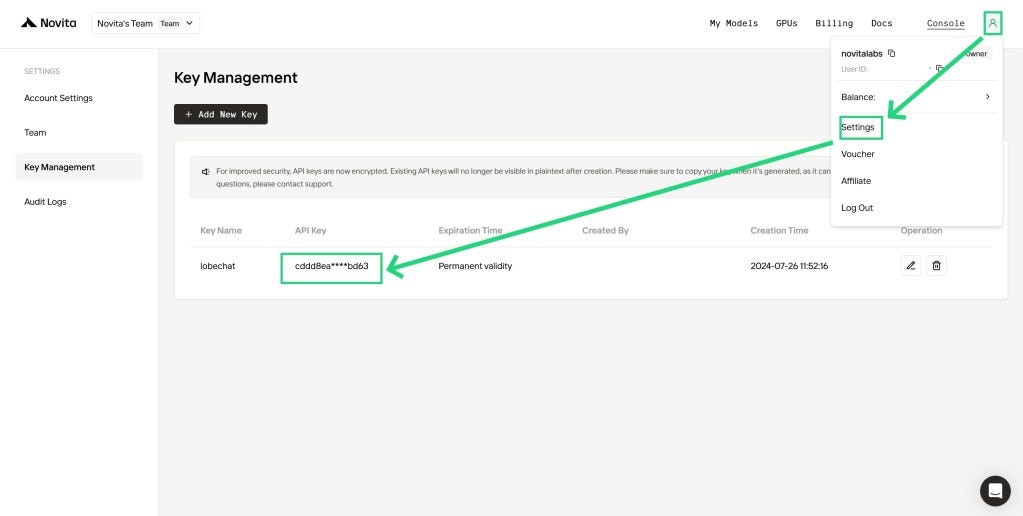
Step 5: Install the API
Install API using the package manager specific to your programming language.
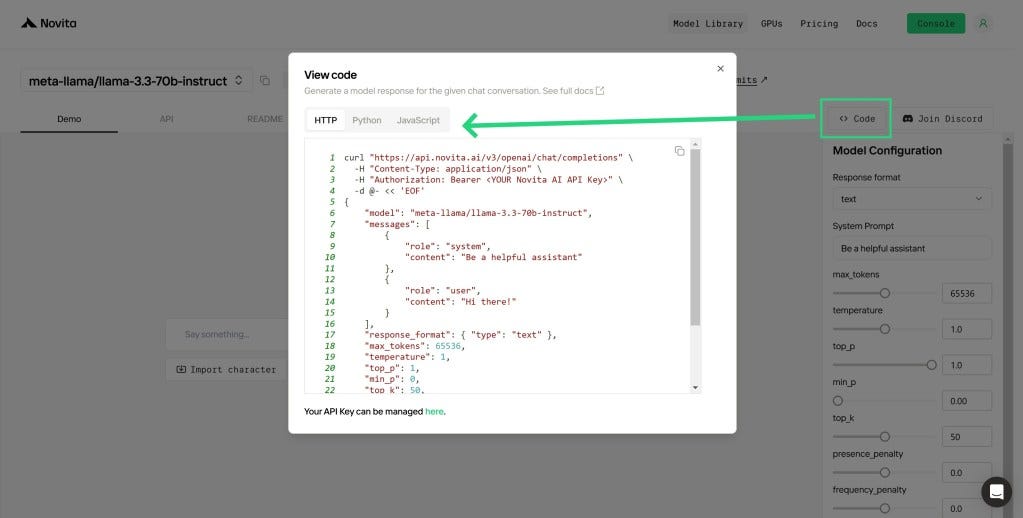
After installation, import the necessary libraries into your development environment. Initialize the API with your API key to start interacting with Novita AI LLM. This is an example of using chat completions API for pthon users.
from openai import OpenAI
client = OpenAI(
base_url="https://api.novita.ai/v3/openai",
# Get the Novita AI API Key by referring to: https://novita.ai/docs/get-started/quickstart.html#_2-manage-api-key.
api_key="<YOUR Novita AI API Key>",
)
model = "meta-llama/llama-3.3-70b-instruct"
stream = True # or False
max_tokens = 512
chat_completion_res = client.chat.completions.create(
model=model,
messages=[
{
"role": "system",
"content": "Act like you are a helpful assistant.",
},
{
"role": "user",
"content": "Hi there!",
}
],
stream=stream,
max_tokens=max_tokens,
)
if stream:
for chunk in chat_completion_res:
print(chunk.choices[0].delta.content or "")
else:
print(chat_completion_res.choices[0].message.content)
Upon registration, Novita AI provides a $0.5 credit to get you started!
If the free credits is used up, you can pay to continue using it.
Conclusion
Both DeepSeek V3 and Llama 3.3 represent significant advancements in large language models. DeepSeek V3 stands out for its efficient Mixture-of-Experts architecture with exceptional performance in math, coding, and reasoning tasks while being designed for efficient training and inference.
Conversely, Llama 3.3 excels in multilingual capabilities and instruction following through its optimized transformer architecture that offers a balance between performance and efficiency.
The best choice between these models will depend on specific application requirements including performance needs, language support, hardware constraints, and cost considerations.
Frequently Asked Questions
What is the main difference in architecture between DeepSeek V3 and Llama 3.3?are the key metrics for evaluating AI models?
Key metrics for evaluating AI models include accuracy, precision, recall, F1 score, latency, throughput, model size, memory usage, inference speed, and training cost.DeepSeek V3 is a Mixture-of-Experts (MoE) model while Llama 3.3 is an auto-regressive transformer-based model.
Which model is better for multilingual tasks?
Llama 3.3 is specifically designed for multilingual dialogue supporting eight major languages natively; however, DeepSeek V3 also demonstrates strong multilingual performance.
Where can I access these models?
Llama can be accessed through platforms like Novita AI while DeepSeek V3 is available on its dedicated platform.
Novita AI is the All-in-one cloud platform that empowers your AI ambitions. Integrated APIs, serverless, GPU Instance — the cost-effective tools you need. Eliminate infrastructure, start free, and make your AI vision a reality.

